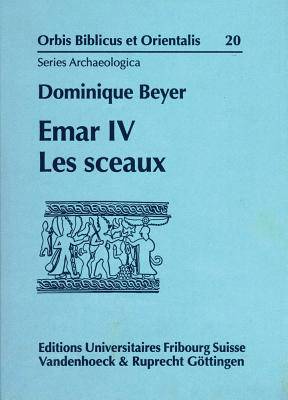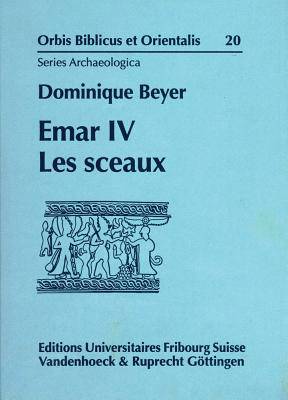
- Afhalen na 1 uur in een winkel met voorraad
- Gratis thuislevering in België vanaf € 30
- Ruim aanbod met 7 miljoen producten
- Afhalen na 1 uur in een winkel met voorraad
- Gratis thuislevering in België vanaf € 30
- Ruim aanbod met 7 miljoen producten
Zoeken
Omschrijving
This work sets forth the important sigillographical material that was brought to light during the salvage excavations at Meskene, the site of ancient Emar. These excavations were carried out during the 1970s, while the Syrian authorities constructed the el-Assad dam in the Euphrates loop. Emar, belonging to the country of Aatata, had been moved and refounded by the Hittites during the XIVth century BC when they established their empire in northern Syria. An important number of cuneiform tablets discovered there are dated from the end of the XIVth to the beginning of the XIIth century BC. These records, mainly sale contracts or testaments, have revealed hundreds of seal impressions, generally those of witnesses of contractors, among them simple citizens but also, naturally, civil servants, the city elders and even Emar's king and the god Ninurta. The considerable interest of these records lies in the fact that they fully enlighten the different currents of influence which met at this cross-road at the end of the Late Bronze Age, and also their impact on local traditions. Syrian, Babylonian, Mitannian iconography played an important role. Still, the most outstanding element in XIIIth century BC Emar is the Syro-Hittite style. This evolution was brutally interrupted by the city's downfall which occurred in c. 1180 BC when the Hittite empire as a whole came to a sudden end.
Specificaties
Betrokkenen
- Auteur(s):
- Uitgeverij:
Inhoud
- Aantal bladzijden:
- 490
- Taal:
- Frans
Eigenschappen
- Productcode (EAN):
- 9783525530016
- Verschijningsdatum:
- 31/12/2001
- Uitvoering:
- Hardcover
- Formaat:
- Genaaid
- Afmetingen:
- 239 mm x 323 mm
- Gewicht:
- 2562 g

Alleen bij Standaard Boekhandel
+ 605 punten op je klantenkaart van Standaard Boekhandel
Beoordelingen
We publiceren alleen reviews die voldoen aan de voorwaarden voor reviews. Bekijk onze voorwaarden voor reviews.











